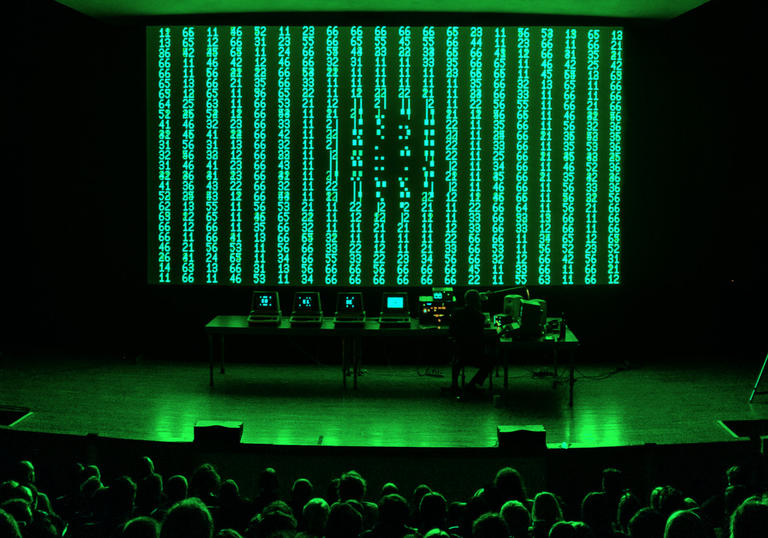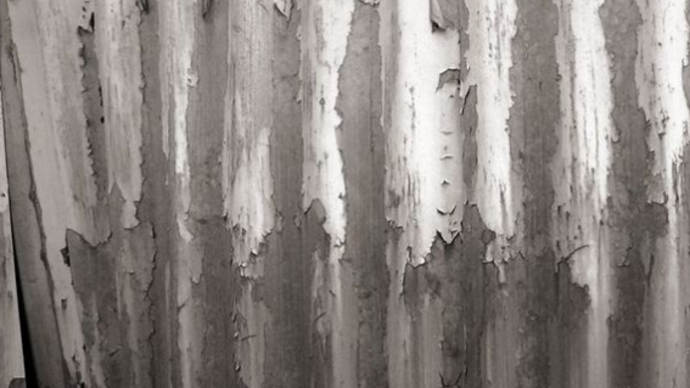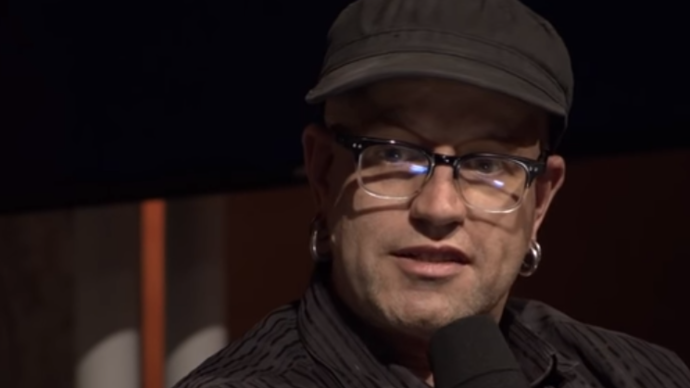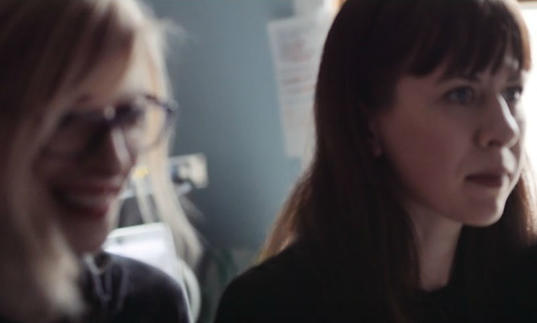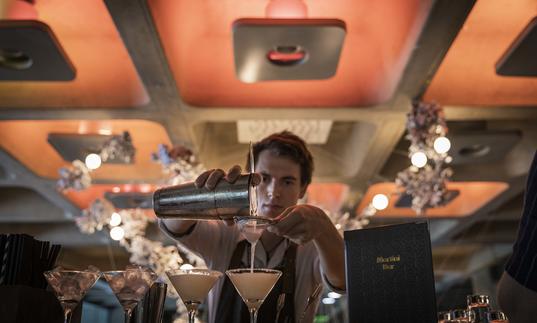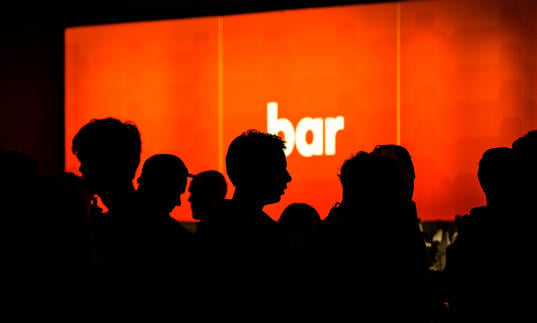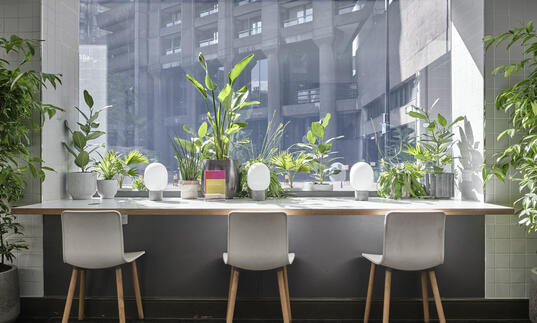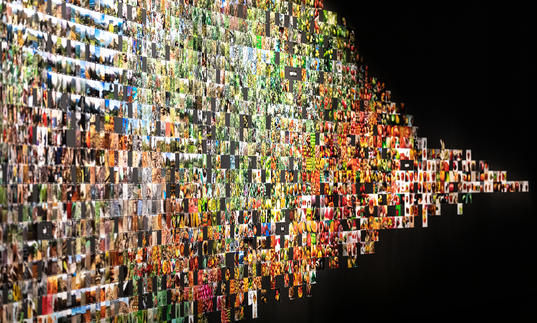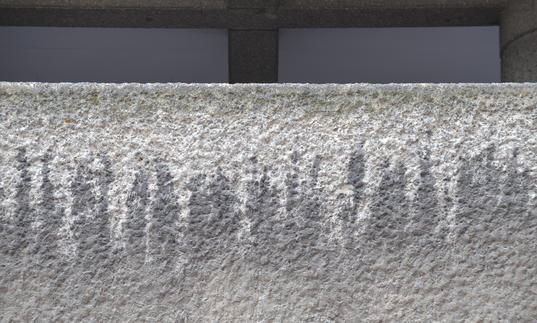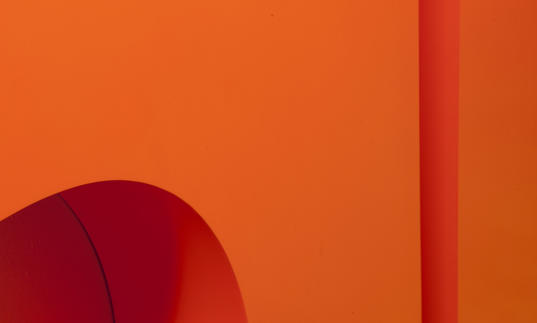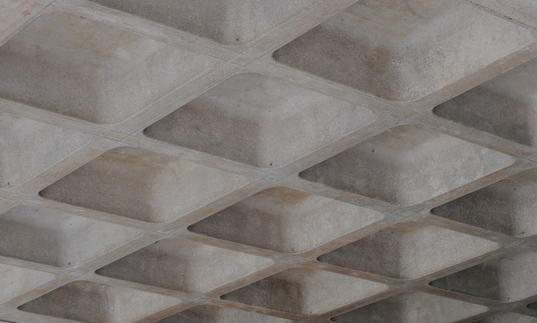Berlin-based electronic music pioneer, Ableton Live software co-creator and audio-visual artist Robert Henke (aka Monolake) is rightly celebrated as an innovator – and it is the past as well as the future that drives his designs. In his latest performance, CBM 8032 AV, Henke creates mesmerizing sound and vision through a line-up of five specially restored CBM [Commodore Business Machines] 8032 computers, which originally date back to the early 1980s.
The experience, according to Henke, is about ‘the ambivalence between a contemporary aesthetic and the usage of a very limited technology from 40 years ago.’ While this project’s presentation may have been possible in the ‘80s, Henke argues that its electric dreams were shaped by 21st-century experience (as well as additional coding from Anna Tskhovrebov). The enduring appeal of these chunky, seemingly obsolete machines, with their flickering screen graphics, is also a focal factor of CBM 8032 AV.
‘First of all, those green cathode ray displays look really cool, in a way that got lost with more modern technology, just from the pure visual side,’ says Henke, cheerfully. ‘And then there is the cultural framing: computers like these were once the future; now they’re the past, but they’re very alive as a popular image; there’s no feature film about computer crime without green characters on screen. Or think of the opening scene of the first Alien movie…’
Henke’s own formative coding experiences happened to take place in his 1980s schooldays, on similar PC models; a few years ago, he bought one on eBay, for his own amusement – this proved an inspirational startup for CBM 8032 AV, as he realized that the machines’ inherent limitations yielded an exciting creative challenge:
‘It’s minimalism by design,’ he explains. ‘You can’t do much with those computers in real time, so everything has to be highly structured and reduced. And then a very contemporary idea of artistic work comes back in, and for me, it all matched. I started to explore how far I could push it – and at some point, the project had to become team work, because the workload exploded, and the scope of the project expanded from doing a work for a gallery using one machine to developing a networked system of five computers running an AV performance.
‘People who know these machines will hopefully be impressed, because everything they’ll see will be familiar, yet completely unseen/unheard of before. All image generation is based on using a set of perhaps 50 graphic symbols, icons of 8 x 8 pixels, as part of the 'PetASCII' character set, and that's it. Sound-wise, I still can't believe we were able to create that much synthesis power with a single 8-bit CPU and no additional sound chip or hardware synthesisers involved. The sound is raw yet refined.’
Fans of Henke’s clubbier music projects such as Monolake will also be pleased to hear that these sounds pack a punch; the artist agrees that ‘the physicality is there’, even in a seated auditorium. There’s an emotional weight, too, which may be fuelled by nostalgia for these rebooted retro objects, or the strange poignancy of man/machine communication:
‘It seems we managed to implant some soul in those old machines,’ admits Henke. ‘And that's of course very encouraging and touching. We developed quite a strong relationship to those five things on the desk during the last year, but of course it is hard to get distance whilst working.’
The five-part “line-up” for the show comprises one computer running a sequencer, also written specifically for this project; another creating all the graphics; and three machines generating the sounds. Henke describes the satisfaction of essentially working from scratch, given these machines predate the “basic” features that we now take for granted in everyday tech.
‘Imagine, these computers do not even have something like a standard network connection – or the software / firmware / hardware for it!’ he points out. ‘So, we were even inventing our own “interrupt driven parallel data bus” hardware just to get the computers to talk to each other.’
At Henke’s last Barbican Centre date – a memorable 2017 performance of his Lumiere III project based on cutting-edge laser technology – he also gave a moving speech, where he spoke about humanity and equality. I wonder if it might be possible to encapsulate CBM 8032 AV’s message for the modern world; Henke’s response is simple but emphatic – hope and fear entwined in these shifting times:
‘No. And in the current state of this world, I am pretty speechless, unfortunately. [I’m] just glad we made it to London before Brexit. Travelling between Europe and the UK with lots of equipment will become a much more time-consuming, expensive, and difficult process in the future.’
